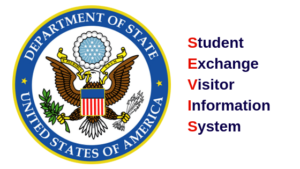The Student and Exchange Visitor Information System (SEVIS) is a crucial element in the U.S. immigration framework, essential for non-U.S. residents and nationals aiming to study in the United States. It oversees and monitors nonimmigrant students and exchange visitors, providing them a gateway to pursue their academic or vocational goals. This article serves as a comprehensive guide to SEVIS, offering valuable insights to students considering their educational journey in the U.S. It will clarify the vital aspects of SEVIS, its connections with the Student and Exchange Visitor Program (SEVP), and the involvement of the U.S. Department of Homeland Security (DHS).
Understanding SEVIS
The Student and Exchange Visitor Program (SEVP) is a part of the U.S. Immigration and Customs Enforcement (ICE), responsible for maintaining SEVIS. SEVIS is an integral part of SEVP, managing and tracking the records of nonimmigrant students and exchange visitors during their stay in the U.S. It is a web-based system that ensures timely and accurate information exchange about their enrollment, course of study, and compliance with U.S. immigration laws.
SEVIS also plays a significant role in national security. It helps the U.S. Department of Homeland Security (DHS) maintain a watchful eye on foreign students and exchange visitors, ensuring that they maintain their status and do not pose a threat to national security. The DHS, with the data provided by SEVIS, can track any violations, ensuring adherence to immigration rules, thereby contributing to the larger framework of national safety.
Benefits and Importance of SEVIS
SEVIS offers multiple benefits, making it a pivotal part of the U.S. immigration system and national security architecture. By monitoring nonimmigrant students and exchange visitors, it aids in ensuring immigration compliance and upholding national security. The system enables the U.S. Department of Homeland Security to accurately track and monitor the status of international students and visitors, identifying potential anomalies or issues that could pose a security risk. Your SEVIS ID is an important identifier unique to your SEVIS record and it is crucial for visa application and arrival procedures. In your SEVIS record, your SEVIS ID number, found on your Form I-20 or DS-2019, will be used as a reference throughout your study or exchange program in the U.S.
SEVIS also plays a vital role in the exchange of educational and cultural opportunities. It serves as the hub of communication between U.S. educational institutions and international students and exchange visitors, fostering a global exchange of ideas, skills, and cultures. This intercultural dialogue not only enriches individual perspectives but also boosts the country’s soft power globally.
Furthermore, SEVIS helps maintain and enhance the integrity of the U.S. educational system. By enforcing strict compliance with immigration regulations among international students, it ensures that the U.S. educational system is not exploited. SEVIS helps keep the academic environment secure and the education quality high, providing a conducive learning space for both domestic and international students. Thus, SEVIS reinforces the reputation of U.S. educational institutions as world-leading places of learning.
SEVIS Process and Requirements
Navigating the SEVIS process can be intricate due to its various requirements and procedural specifics. This section breaks down the complexities into simpler parts, covering aspects such as SEVIS fees, the critical Form I-20, maintaining student status, and how SEVIS interacts with visa applications. Understanding these facets will provide an invaluable guide for non-U.S. nationals embarking on their academic journey in the U.S.
SEVIS Fees and the Form I-20
Understanding the Form I-20 is essential for international students, as it serves as proof of their eligibility as nonimmigrant students. The document, issued by SEVIS-approved educational institutions, is required for applying for a student visa, entering, and remaining in the U.S. It also details important information about the student’s program of study and duration. The SEVIS fee is a mandatory charge for international students and exchange visitors, which supports the operation and maintenance of the Student and Exchange Visitor Information System (SEVIS).
Additionally, paying the SEVIS fee is a critical step. This fee funds the Student and Exchange Visitor Program (SEVP) and its maintenance of the SEVIS system. It’s important to ensure payment confirmation before applying for a visa. Completing your SEVIS fee payment is a critical step in the visa application process, and it must be done before scheduling your visa interview. Making your SEVIS payment correctly is crucial, as proof of this payment is a necessary component of your visa application.
SEVIS Reporting and Maintaining Student Status
SEVIS-approved educational institutions play a critical role in maintaining the status of their international students. They are responsible for reporting any significant changes in the student’s enrollment status or personal details to SEVIS. Students, in turn, have an obligation to report any changes in their personal or academic circumstances to their institution, ensuring that their SEVIS record remains accurate.
SEVIS and Visa Applications
SEVIS information plays a crucial role in the visa application process. Upon receipt of the Form I-20 and SEVIS fee payment confirmation, students can proceed to apply for their visa. The accuracy of SEVIS information is pivotal, as U.S. consulates verify the data in SEVIS before issuing a visa. It’s therefore vital to maintain the most up-to-date and correct information in the SEVIS system. Upon completion of your payment, a SEVIS fee receipt will be generated which serves as proof of your payment, and it is necessary to keep this document for future reference and for your visa interview.
SEVIS and Student Life in the USA
Arrival in the U.S. and the subsequent life as a student are crucial phases where SEVIS remains integral. Once students arrive in the U.S., they must report to their designated educational institution, which in turn, updates their arrival information in SEVIS. This process is pivotal to validate their status in the U.S.
Moreover, SEVIS regulates certain key aspects of student life, including program start dates. Institutions typically set mandatory SEVIS check-ins or orientations before the program begins. It is crucial for students to attend these sessions as failing to do so can lead to the termination of their SEVIS record.
Travelling outside the U.S. and re-entry also involve SEVIS. Students must carry their up-to-date Form I-20, endorsed for travel by the designated school official, to re-enter the U.S. Ensuring that their SEVIS record is active and accurate is vital to prevent any issues at the border.
SEVIS also plays a role when students change their educational institution. Transferring requires coordination between the current and prospective institution to correctly update the student’s SEVIS record and ensure continued legal status.
Lastly, SEVIS governs employment options for international students. Depending on their visa type, students may have permission to work on-campus or must apply for specific work authorization for off-campus employment, like Curricular Practical Training (CPT) or Optional Practical Training (OPT). Understanding these restrictions is key to maintaining compliance with U.S. immigration regulations while maximizing the U.S. study experience.
SEVIS Compliance and Consequences
Non-compliance with SEVIS regulations can have serious implications for international students, including loss of legal immigration status in the U.S., which can lead to immediate departure or deportation. Understanding status violations and reinstatement procedures is vital. Violations might include unauthorized employment, failure to maintain full-time enrollment, or not reporting changes in personal details. Reinstatement procedures involve filing a request with the U.S. Citizenship and Immigration Services, but success is not guaranteed.
SEVIS termination is one of the most severe outcomes of non-compliance. It implies the end of the student’s legal status, making it crucial to abide by all SEVIS regulations and stay in close communication with designated school officials.
Resources and Support for SEVIS Students
Understanding the complexities of SEVIS can be challenging, but a variety of resources can help guide international students. SEVP-certified schools play a critical role in this process. They not only provide the much-needed Form I-20 but also offer assistance in navigating the visa application process. Designated school officials (DSOs) at these institutions are invaluable resources as they have an in-depth understanding of SEVIS regulations and can help students maintain their status.
Several government websites offer extensive guidance on SEVIS. For instance, the Study in the States website from the Department of Homeland Security is a comprehensive source of information. It offers interactive tools, guides, and tips to help students understand and navigate SEVIS.
In addition to these formal resources, support networks and communities for international students are also crucial. Various organizations and groups exist to assist international students in the USA, providing practical support, social activities, and opportunities to connect with other students. Universities often have international student services offices that offer support, and online platforms, including social media groups and forums, can provide additional advice and peer support. These resources can help make the process of navigating SEVIS less daunting and the experience of studying in the USA more enriching.



